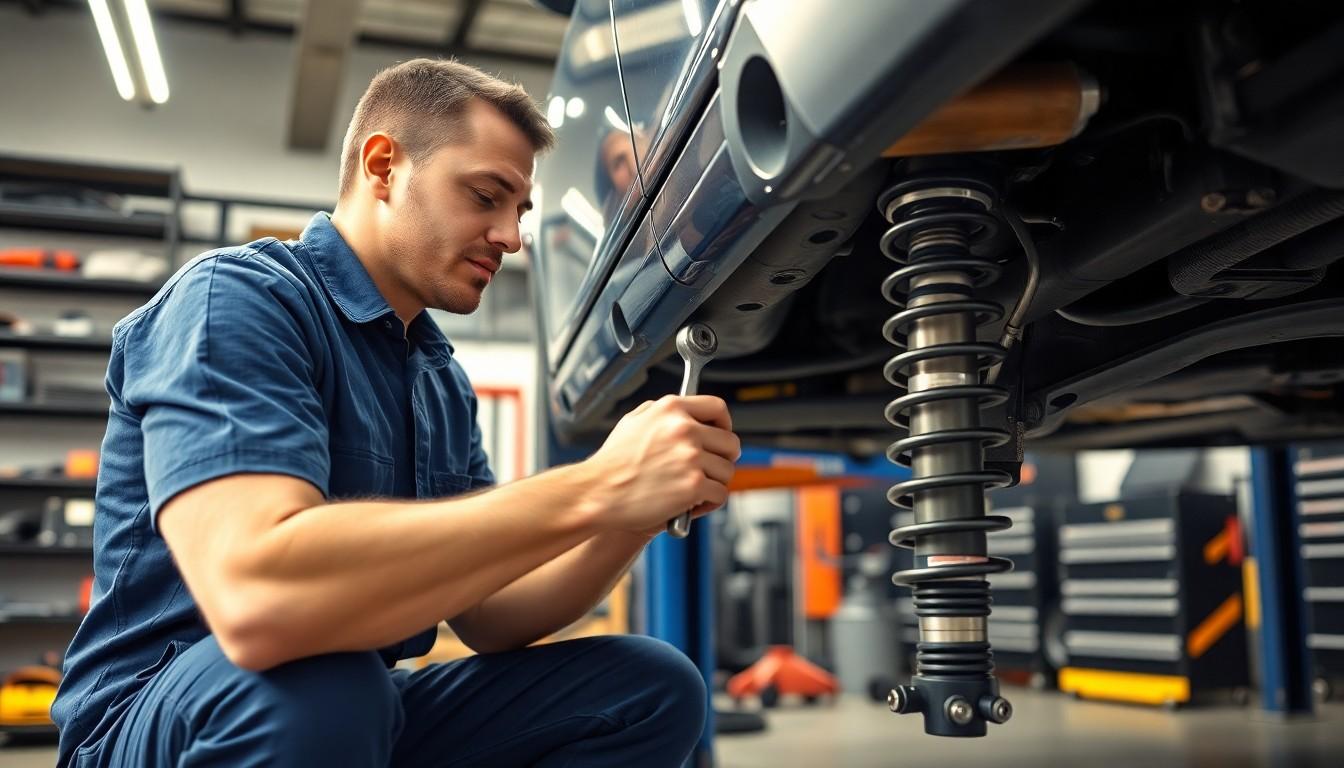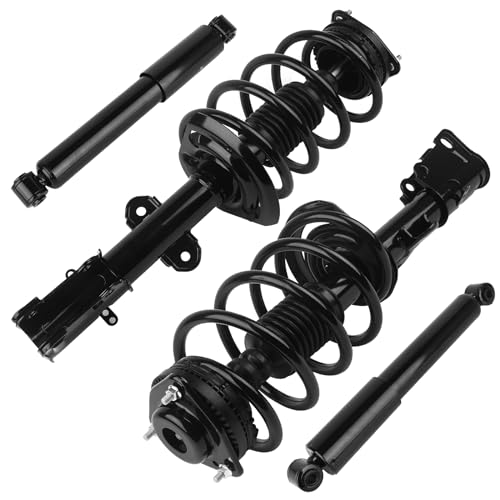Ever wondered how many struts support your car as you drive down the road? You’re not alone. Struts are critical suspension components that affect your vehicle’s handling, comfort, and safety—yet many drivers don’t know exactly how many their car has or what these parts actually do.
We’ve created this comprehensive guide to demystify car struts once and for all. Whether you’re experiencing a bumpy ride, hearing strange noises, or simply want to understand your vehicle better, knowing about struts is essential knowledge for any car owner. Most passenger vehicles typically have either two or four struts, but the exact configuration depends on your exact make and model.
Understanding Car Struts and Their Function
Car struts are crucial components of a vehicle’s suspension system that combine a shock absorber and a spring coil into one integrated assembly. These vital parts serve several important functions in your vehicle’s operation and performance. Struts provide structural support for the suspension system while simultaneously absorbing the impact from road irregularities.
When driving over bumps or potholes, struts compress and decompress to minimize the force transferred to the vehicle’s frame and passengers. This dampening effect significantly improves ride comfort by reducing jarring sensations and preventing excessive vehicle bouncing. Also, struts maintain proper wheel alignment and keep the tires in contact with the road surface, which is essential for optimal handling and control.
The primary functions of struts include:
- Supporting vehicle weight and maintaining ride height
- Absorbing road shocks and dampening vibrations
- Controlling suspension movement during cornering, acceleration, and braking
- Maintaining proper wheel alignment for even tire wear
- Stabilizing the vehicle during directional changes
Unlike traditional shock absorbers, struts are load-bearing components that form part of the structural support of the suspension system. Their design incorporates a piston and hydraulic fluid that work together to control the rate at which the suspension compresses and rebounds. Many modern vehicles use a MacPherson strut design, especially for front suspensions, which integrates the strut into a single unit that includes the spring, shock absorber, and upper mounting point.
Properly functioning struts contribute to extended tire life, improved braking performance, and enhanced overall safety. As these components wear over time, you might notice symptoms like excessive bouncing, nose-diving during braking, or uneven tire wear that indicate it’s time for replacement or inspection.
How Many Struts Does a Typical Car Have?
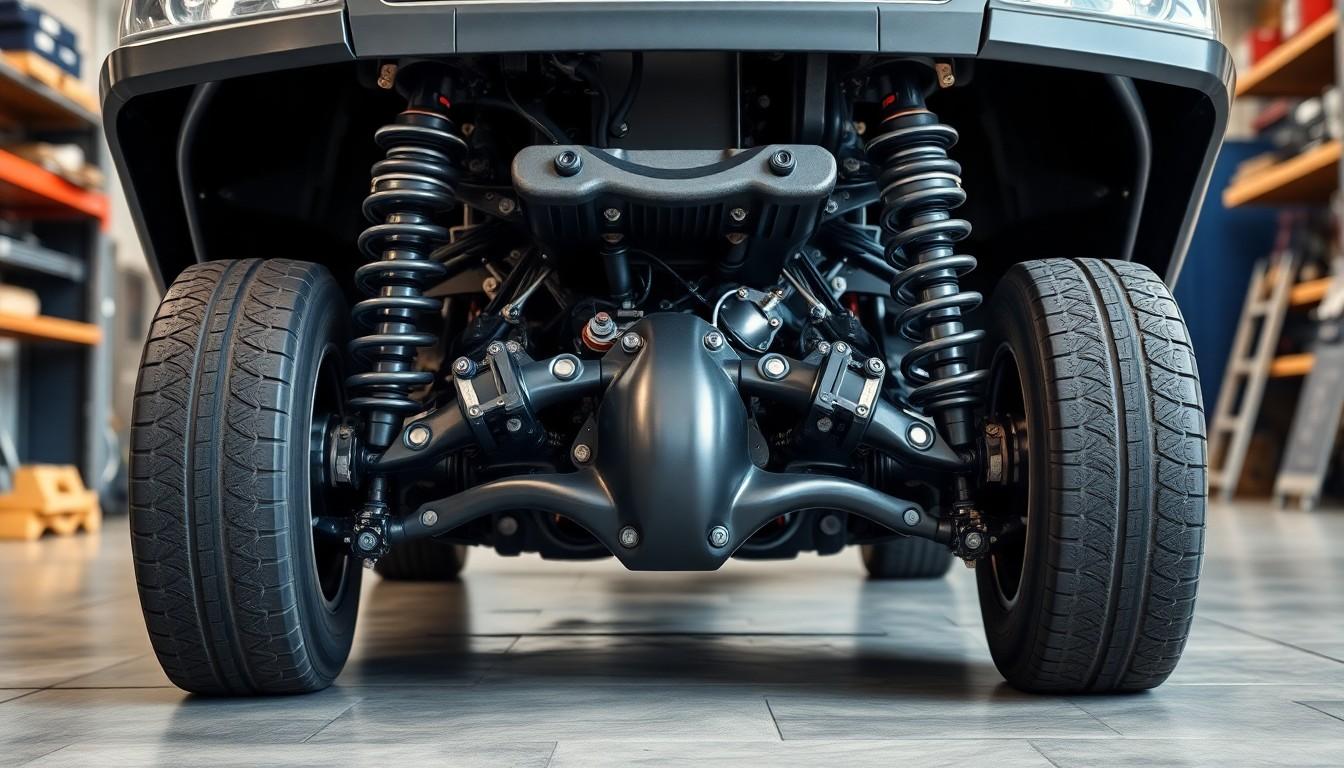
Most modern vehicles feature a variable number of struts depending on their design and suspension system. Typically, cars include either two struts (one on each front wheel) or four struts (one on each wheel), with the front-only configuration being more prevalent in front-wheel-drive vehicles.
Front Strut Configuration
Front-wheel-drive cars commonly employ a strut on each front wheel as part of their suspension system. These front struts perform dual functions by acting as dampers and critical structural components that support the vehicle’s springs. They’re essential for maintaining proper tire alignment and absorbing road impacts while driving. The MacPherson strut design is particularly popular for front suspensions due to its compact size and effective performance characteristics. Front struts bear important weight and face substantial stress during braking, making them crucial for vehicle stability and handling.
Rear Suspension Options
Rear suspension configurations vary significantly across different vehicle models and designs. Many cars use traditional shock absorbers paired with separate coil springs instead of integrated struts in the rear. This setup appears frequently in rear-wheel-drive and certain all-wheel-drive vehicles where different weight distribution considerations apply. Some vehicles, particularly those with independent rear suspension systems, do incorporate struts on the rear wheels, though this arrangement isn’t as universal as front struts. SUVs and larger vehicles sometimes feature rear struts to provide additional stability and load-bearing capacity, especially when carrying heavy cargo or towing. The exact rear suspension design typically reflects the manufacturer’s priorities about handling characteristics, comfort, cost, and space efficiency.
Vehicles With Two Struts vs. Four Struts
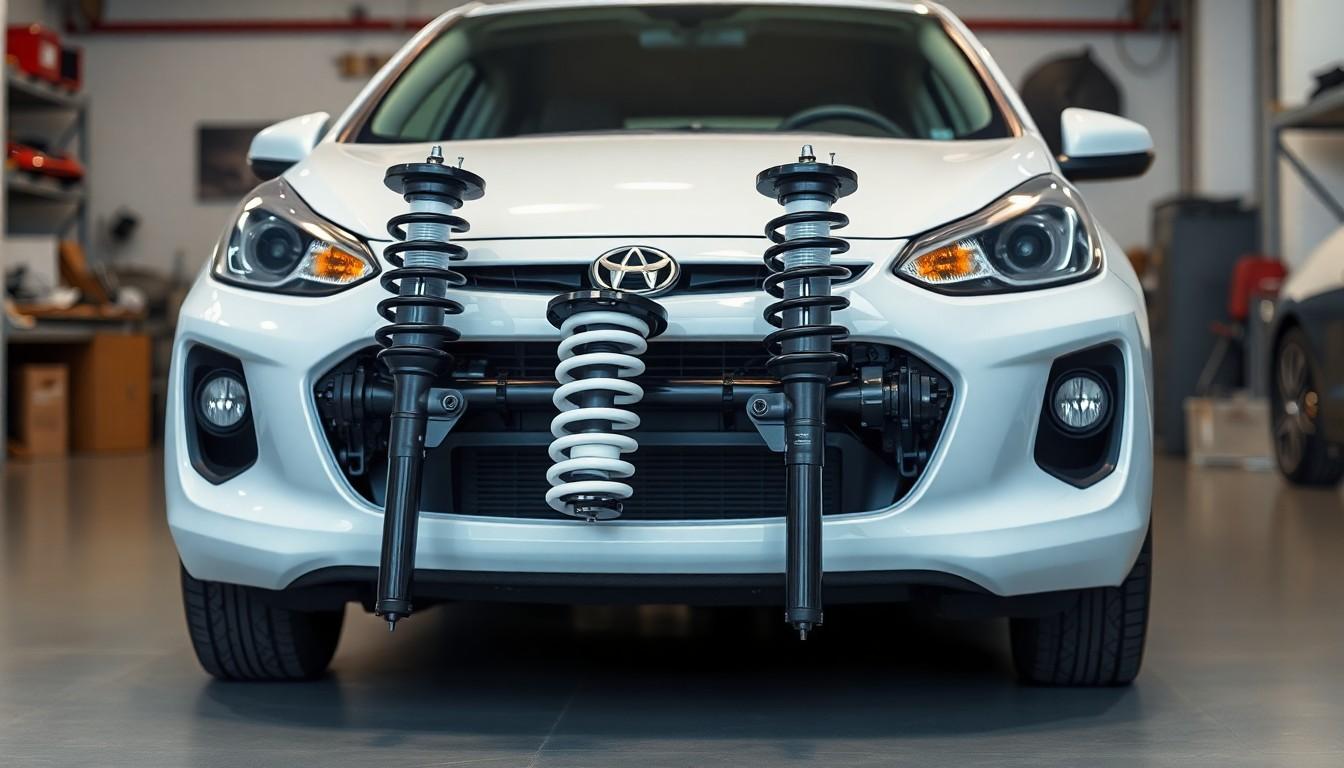
Modern cars carry out different strut configurations depending on their design and drivetrain layout. The most common setups include either two struts (front wheels only) or four struts (all wheels), each offering exact performance characteristics and engineering advantages.
Cars With Struts in Front Only
Front-wheel-drive vehicles typically feature two struts, with one positioned on each front wheel. This configuration dominates the automotive market, particularly in compact and mid-size passenger cars. The front struts in these vehicles perform dual roles – they support the vehicle’s weight while simultaneously maintaining proper wheel alignment and dampening road vibrations. The rear suspension in these two-strut vehicles usually incorporates traditional shock absorbers paired with separate coil springs rather than integrated strut assemblies. Manufacturers choose this design approach for several practical reasons: cost efficiency, simplified engineering, and adequate performance characteristics for everyday driving conditions.
Vehicles With Complete Strut Systems
Some vehicles employ a complete four-strut system with struts on all wheels. This comprehensive configuration provides consistent suspension support and handling characteristics across the entire vehicle. Four-strut systems appear less frequently in the market but offer advantages in certain applications. Vehicles with independent rear suspension particularly benefit from rear struts, as they enhance stability, improve load-bearing capacity, and deliver more consistent ride quality. Many SUVs, performance-oriented vehicles, and cars designed for superior handling incorporate this setup. The four-strut design creates uniform suspension response between front and rear, resulting in more predictable behavior during cornering, braking, and acceleration.
Signs of Worn or Damaged Struts
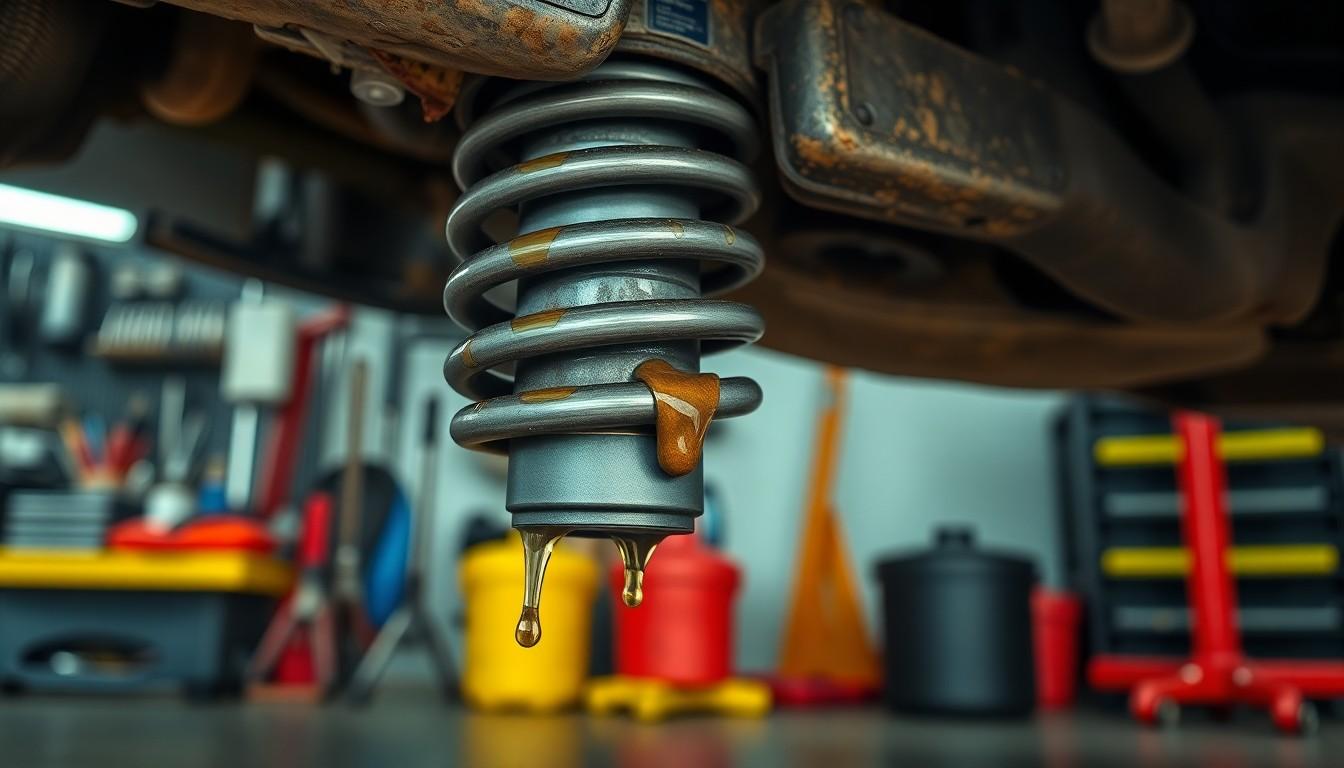
Recognizing the symptoms of failing struts helps prevent more serious suspension problems and unsafe driving conditions. Your vehicle’s ride quality changes noticeably when struts begin to wear out. An excessively bouncy or unstable ride is often the first indicator that something’s wrong with your strut assemblies. During hard braking, you’ll notice your vehicle’s front end dipping significantly – a clear sign of strut deterioration.
Visible fluid leaks from the strut body indicate seal failure within the component. Cars with worn struts frequently bottom out over rough roads or when backing out of driveways with even slight inclines. Excessive body sway or rocking while cornering or driving in crosswinds suggests your struts aren’t properly stabilizing your vehicle anymore.
Tire wear patterns often reveal suspension issues before other symptoms appear. Heavy or uneven tire wear across the tread surface commonly results from compromised strut performance. Driving becomes particularly uncomfortable when tires shake violently after hitting even minor bumps in the road. Wheel shimmy and persistent vibration when traversing rough road sections further confirm that your struts require professional inspection or replacement.
When and Why to Replace Your Car’s Struts
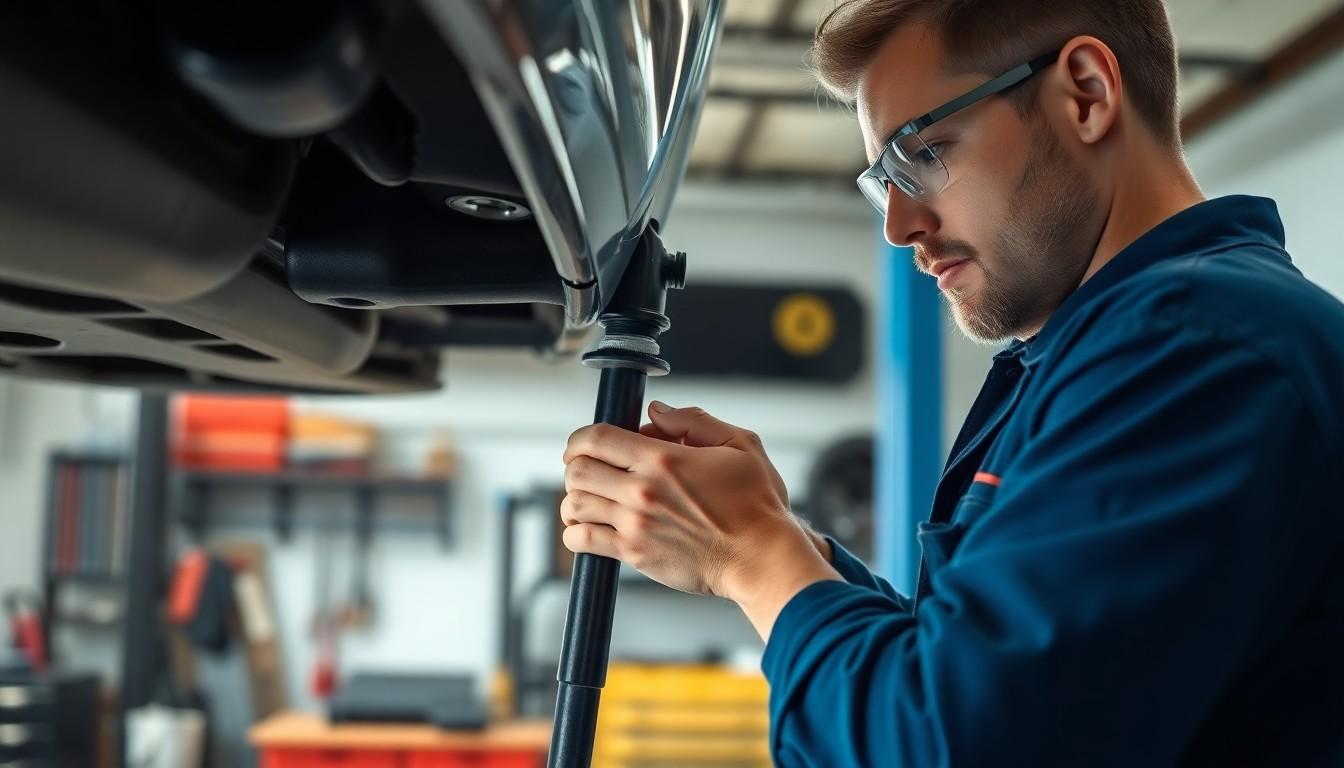
Recognizing the right time to replace your vehicle’s struts is crucial for maintaining safety, handling, and ride comfort. Worn struts can significantly impact your driving experience and potentially lead to more expensive repairs if ignored.
Average Lifespan of Struts
Car struts typically last between 50,000 and 100,000 miles, though actual longevity varies based on several factors. Road conditions play a important role—vehicles frequently driven on rough, potholed streets experience faster strut deterioration than those used primarily on smooth highways. Driving habits directly impact strut life; aggressive driving with frequent hard braking and sharp turns places additional stress on suspension components. The vehicle’s payload also affects strut longevity, as regularly carrying heavy loads accelerates wear. For exact maintenance intervals, checking your vehicle’s owner’s manual provides the most accurate guidance customized to your car’s make and model.
Several warning signs indicate it’s time for strut replacement:
- Noticeable bouncing after driving over bumps
- Front-end nose-diving during hard braking
- Visible fluid leaking from the strut assembly
- Suspension bottoming out on uneven surfaces
- Excessive body sway or rocking during turns
- Unusual tire wear patterns or irregular tread wear
- Wheel shimmy and vibration, especially on textured roads
Professional vs. DIY Replacement
Professional Replacement
Professional strut replacement offers many advantages for most vehicle owners. Certified mechanics possess specialized tools designed specifically for suspension work, ensuring proper installation and torque specifications. The replacement process includes crucial alignment services that DIY methods often can’t replicate accurately. Technicians can simultaneously inspect other suspension components for wear, potentially preventing future problems. Professional installation also typically comes with service warranties that protect against installation errors or parts failure. Though more expensive initially, professional replacement provides peace of mind about safety and proper functionality.
DIY Replacement
DIY strut replacement presents a important challenge even for experienced home mechanics. The process requires specialized tools including spring compressors, which can be dangerous if used incorrectly. Proper torque application is essential during installation to prevent components from loosening during operation. A post-installation wheel alignment is mandatory but requires professional equipment that most home garages don’t possess. Incorrect installation risks serious safety issues including unpredictable handling, uneven tire wear, and potentially catastrophic suspension failure. Given the critical safety role struts play in vehicle stability and control, professional replacement remains the recommended option for most drivers even though the higher cost.
For safety and performance reasons, struts should always be replaced in pairs—either both front or both rear—to maintain balanced suspension characteristics and predictable handling.
Cost Factors for Strut Replacement
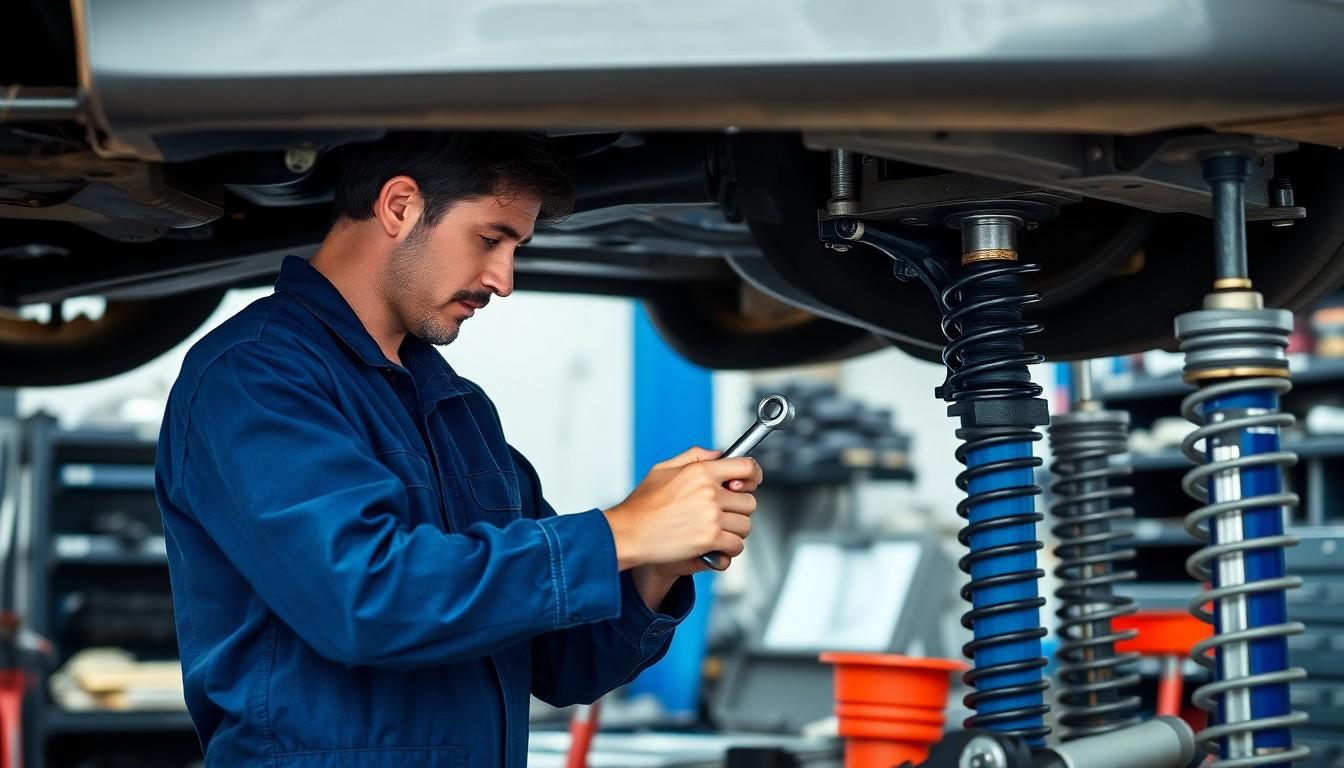
1. Type and Quality of Struts
Strut replacement costs vary significantly based on the type you choose for your vehicle. OEM (Original Equipment Manufacturer) struts typically command higher prices than aftermarket alternatives, though they often provide excellent compatibility with your exact vehicle model. Aftermarket options range from budget-friendly basic models to premium performance-oriented struts that enhance handling characteristics. The quality level you select directly impacts both the immediate cost and the long-term durability of your suspension system.
2. Labor Costs
Labor expenses make up a substantial portion of total strut replacement costs. Professional mechanics typically charge between 1-3 hours of labor per strut replacement, depending on your vehicle’s complexity. Independent repair shops generally offer more competitive labor rates compared to dealerships, which can translate to important savings on your total bill. The technical complexity of removing and installing struts, plus the specialized tools required, explains why labor represents such a notable part of the overall expense.
3. Replacement in Pairs
Replacing struts in pairs is considered a best practice in the automotive repair industry. Installing both front struts at the same time ensures balanced suspension performance and prevents uneven wear on your vehicle’s components. While this approach effectively doubles your parts cost compared to replacing just one strut, it’s a worthwhile investment that prevents potential handling issues and extends the lifespan of your new components. Most professional mechanics won’t recommend replacing a single strut unless absolutely necessary.
4. Additional Repairs
Strut replacement often reveals the need for additional component replacements that weren’t initially apparent. Mounting brackets, bearings, and coil springs frequently show wear when struts are removed and should be addressed simultaneously. These supporting components typically add $50-200 per wheel to your total repair cost but provide comprehensive suspension restoration. Skipping these supplementary repairs often leads to premature wear of your new struts and potentially costly future repairs.
5. Vehicle Make and Model
Your car’s make and model significantly influence strut replacement costs. Luxury vehicles and high-performance cars feature more sophisticated suspension systems with correspondingly expensive components. German luxury brands and certain Japanese performance models typically have struts costing twice as much as those for standard domestic vehicles. Economy cars generally have more affordable strut options available, making replacement more budget-friendly for these models.
6. Location and Service Provider
Geographic location and your chosen service provider create substantial cost variations for strut replacement. Dealerships typically charge premium rates but offer manufacturer-trained technicians familiar with your exact vehicle. Independent repair shops generally provide more competitive pricing while maintaining quality service. Urban areas with higher operating costs often have higher labor rates than rural locations. Comparing quotes from multiple providers in your area can reveal surprising price differences for identical strut replacement services.
How Struts Affect Vehicle Performance and Safety
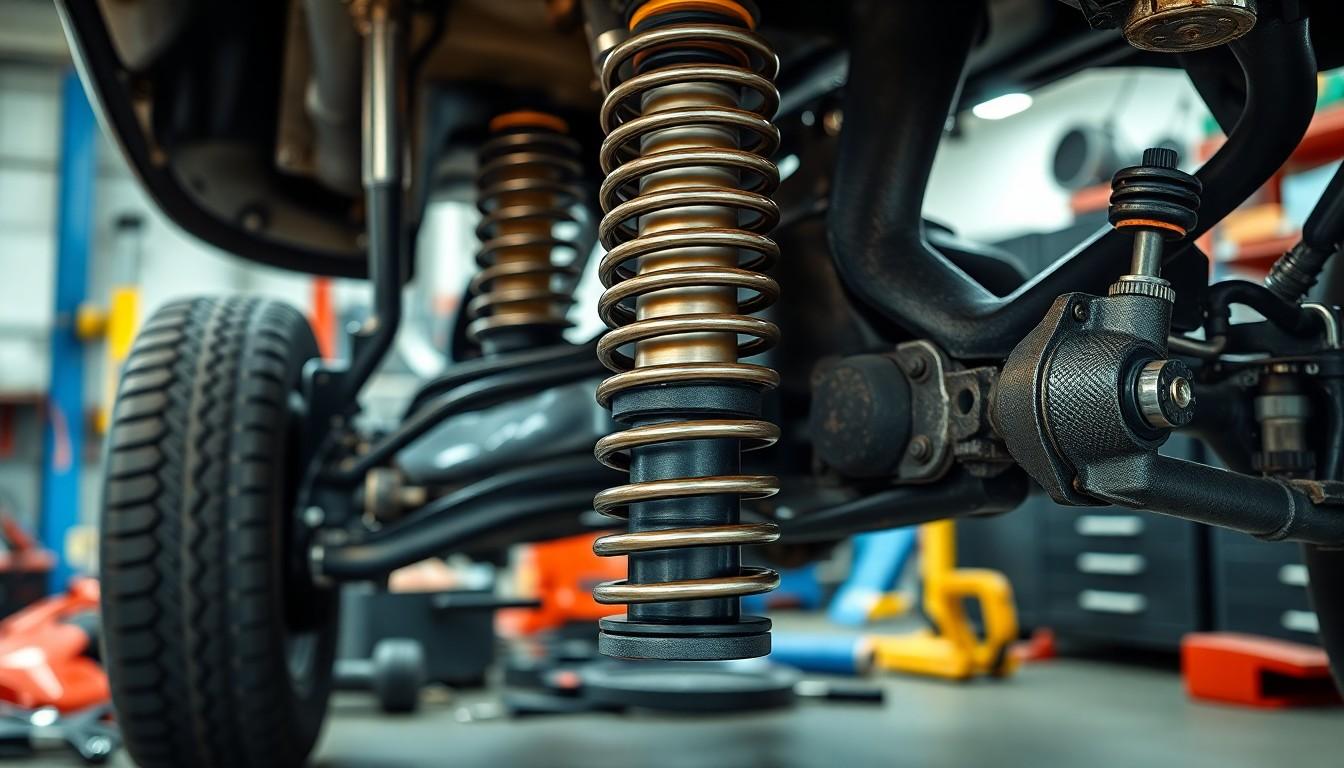
Function of Struts
Struts perform two essential roles in your vehicle’s suspension system. They act as dampers to control the movement of springs and suspension, delivering a smoother and more comfortable ride. Struts also provide critical suspension support by maintaining proper tire alignment and supporting the vehicle’s springs.
Impact on Performance
Properly functioning struts significantly enhance your vehicle’s overall performance. They reduce bouncing and vibrations, ensuring a more comfortable driving experience on various road surfaces. Handling and stability improve dramatically with good struts, particularly during cornering and braking maneuvers. Even tire wear is another benefit of well-maintained struts, as they help keep tires properly aligned with the road surface.
Impact on Safety
Struts contribute directly to your vehicle’s safety in multiple ways. They enhance overall stability, especially during challenging driving situations like hard braking, tight cornering, and driving in strong crosswinds. Braking performance remains consistent with properly functioning struts, preventing the dangerous nose-dive effect that occurs during hard stops with worn components. Your suspension’s integrity depends on struts that prevent bottoming out on rough roads, which could otherwise lead to loss of control and potential accidents.
Signs of Worn-Out Struts
- Excessive bouncing after hitting bumps
- Noticeable nose-diving during braking
- Visible fluid leaks around the strut assembly
- Suspension bottoming out on uneven surfaces
- Pronounced body sway during turns or in crosswinds
- Irregular or accelerated tire wear patterns
- Increased wheel vibration and shimmy on rough roads
Conclusion
Understanding how many struts are on your car and their function is essential for vehicle maintenance and safety. Whether your vehicle has two struts in the front or a full set of four these components play a critical role in your car’s handling comfort and stability.
By recognizing the warning signs of worn struts and addressing issues promptly you’ll extend the life of related components while ensuring a safer driving experience. Remember that proper strut maintenance isn’t just about comfort—it’s a crucial aspect of your vehicle’s overall safety system.
When it’s time for replacement weigh the pros and cons of professional versus DIY approaches and always replace struts in pairs for balanced performance. Your investment in quality struts will pay dividends in improved handling better fuel efficiency and enhanced safety on the road.
Frequently Asked Questions
How many struts does a typical car have?
Most passenger vehicles have either two or four struts. Front-wheel-drive cars typically have two struts (one on each front wheel), with traditional shock absorbers in the rear. Some vehicles, particularly those with independent rear suspension, have a complete four-strut system with one strut on each wheel.
What is the function of struts in a car?
Car struts serve multiple critical functions: they support vehicle weight, absorb road shocks, control suspension movement, maintain proper wheel alignment, and stabilize the vehicle during turns. Unlike regular shock absorbers, struts are load-bearing components integral to the suspension’s structure, contributing to ride comfort, handling, and safety.
How long do car struts typically last?
Car struts typically last between 50,000 and 100,000 miles. Their lifespan varies based on driving conditions, habits, and vehicle load. Rough roads, aggressive driving, and regularly carrying heavy loads can significantly reduce strut life, while gentle driving on smooth roads can extend it.
What are signs that struts need replacement?
Signs of worn struts include excessive bouncing after bumps, nose-diving during braking, unusual noises over bumps, fluid leaks on the strut body, uneven tire wear, excessive body roll when cornering, and poor steering response. If you notice these symptoms, it’s advisable to have your suspension inspected.
Can I replace struts myself or should I hire a professional?
While DIY strut replacement is possible for experienced home mechanics, professional installation is recommended for most drivers. Professionals have specialized tools, proper equipment for compression of coil springs (which can be dangerous), and can perform necessary wheel alignment afterward. Improperly installed struts can lead to safety issues.
Should struts be replaced in pairs?
Yes, struts should always be replaced in pairs (both front or both rear) even if only one appears damaged. This ensures balanced suspension characteristics, predictable handling, and even wear. Replacing just one strut can create uneven ride height and handling inconsistencies that might compromise safety.
How do struts differ from shock absorbers?
Unlike shock absorbers, struts are load-bearing components that provide structural support for the suspension system. Struts combine a shock absorber with a coil spring in one integrated assembly, serving as a pivotal structural component of the suspension. Shock absorbers only dampen movement and aren’t structural elements.
How much does strut replacement typically cost?
Strut replacement typically costs between $450-$900 per pair, including parts and labor. Costs vary based on vehicle make/model, strut quality (standard vs. performance), and whether additional components like mounts and bearings are replaced. Luxury and performance vehicles generally have higher replacement costs.
Do I need an alignment after replacing struts?
Yes, wheel alignment is essential after strut replacement. Installing new struts changes suspension geometry, which affects wheel alignment angles. Skipping alignment can result in uneven tire wear, poor handling, and compromised safety. Most professional strut replacements include alignment in the service.
How do struts affect vehicle safety?
Properly functioning struts are critical for vehicle safety. They maintain stability during emergency maneuvers, ensure proper tire contact with the road, prevent excessive body roll during cornering, and reduce stopping distances by preventing nose-diving during braking. Worn struts significantly compromise these safety aspects.

